Features
Dialectics for a fast evolving scenario

by Kumar David
“The question whether objective truth can be attributed to human thinking is not a question of theory; it is a practical question. Man must prove the truth — i.e. the reality and power, the ‘this-sidedness’ of his thinking in practice. The dispute over the reality or non-reality of thinking that is isolated from practice is a scholastic question”. Second Thesis on Feuerbach
Don’t turn away, this is not going to be a boring treatise in abstract Marxism. I will quickly get to my topic, which is that the political circumstances we are living through are evolving rapidly and we should be alert and adjust to changing situations. First however allow me a few paragraphs about Lenin’s most dynamic years, from February 1917 till he fell seriously ill in late 1921. He died in January 1924 due to complications from bullets lodged in him in Fanny Kaplan’s August 1918 assassination attempt. The February Revolution, (old Julian-style last week of February to early March, new Gregorian-style second week of March) took Lenin and the Bolshevik Party by surprise. When first the women and then the workers of Petrograd fired up leaderless demonstrations which overthrew the monarchy, the Bolsheviks who had prepared the proletariat for revolution for 30 years were stunned! Except Trotsky the general expectation among socialists was a Two Stage Revolution; first Tsarism would be replaced by the rule of the bourgeoisie, then it would be the turn of the subaltern classes – a common at the time static misreading of Marx’s dialectical thinking.
I see developments in Sri Lanka moving fast with unforeseen changes and a regime that most of us last year considered strong and stable, now tottering. Of course it’s going to fall tomorrow but it’s wobbling and the domestic environment is changing unpredictably. Catholics are visibly angry about an alleged “cover up of Easter bombing organisers” (https://www.youtube.com/watch?v=EA2Zl1mVrOo); the in the Buddhist clergy have counter-attacked the Cardinal 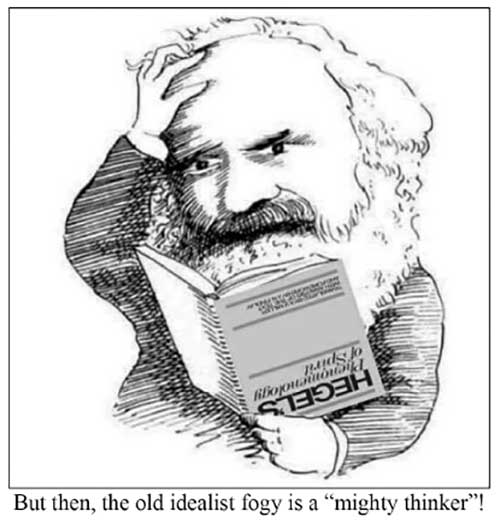 (https://www.youtube.com/watch?v=OC0WcSiJiJs0). Farmers in several areas are on the warpath according to News First. Furthermore nobody foresaw in 2019 the havoc covid would wreak, and the ferocity of UNHRC denunciations was unexpected. It is true that red lights were flashing about debt servicing and that the economy was in hopeless straights, but the convergence of bad news has been more rapid than foreseen and the regime has quickly gone belly up. All who join a mission with a single simple objective, to protect democracy, perforce, have to adjust to a fast changing scenario. The ability to think and act on one’s feet is what makes Lenin of 1917-1921 interesting. He remains the star disciple of Sun Tzu’s Art of War, a fifth century BC classic on strategy. While shifting and manoeuvring Lenin never lost sight of his final objectives. This is why I call him the dialectic on two feet.
(https://www.youtube.com/watch?v=OC0WcSiJiJs0). Farmers in several areas are on the warpath according to News First. Furthermore nobody foresaw in 2019 the havoc covid would wreak, and the ferocity of UNHRC denunciations was unexpected. It is true that red lights were flashing about debt servicing and that the economy was in hopeless straights, but the convergence of bad news has been more rapid than foreseen and the regime has quickly gone belly up. All who join a mission with a single simple objective, to protect democracy, perforce, have to adjust to a fast changing scenario. The ability to think and act on one’s feet is what makes Lenin of 1917-1921 interesting. He remains the star disciple of Sun Tzu’s Art of War, a fifth century BC classic on strategy. While shifting and manoeuvring Lenin never lost sight of his final objectives. This is why I call him the dialectic on two feet.
Often in this column I have referred to the dialectic as the scientific method; true but how boring! Yes true enough Darwin, the best example in science was an assiduous and utterly trustworthy accumulator of data but with a mind that was alive to how phenomena change and evolve. Gautama Buddha pointed out that nothing is permanent and that all things are evolving but it took Darwin to work out the precise mechanisms by which this was happening in biology. Still, the dialectics of science and nature are slow moving. It is not exciting, it won’t keep you awake at night. Conversely, jumping from Two-Stage theory to instant proletarian revolution on April 1, 1917, capturing state power in October in defiance of scholastic Marxism, pushing back against attempts to militarise the trade unions and the refusal to give the Germans whole swathes of land so as to commit to the treaty of Brest-Litovsk (on both Trotsky erred), and in 1921 forcing through the New Economic Policy, a key market oriented concession to capitalist farming, these were momentous strategic transitions, quite breathtaking.
Bearded boring Bolshies 100 years ago, what’s it got to do with us you ask? I’ll tell you. The commonality is that quite unexpectedly we find ourselves in a very fast changing scenario. Lenin in 1917-1922, was an embodiment of the dialectic because he was able to think on his feet and keep his side united using his singular ability to deal with a swift change while the other side (sides to be more accurate) were confused and splintered. This is a useful example for those who seek a democratic, plural and united Sri Lanka because to date this side (I call it ‘we’) have managed to keep our message consistent and united while the ‘other’ side is splintering. President Gota bemoans his unpopularity and his inability to address challenges because “there is no unity” or some such words. I don’t have a clue what skulduggery is going on within the Royal Rajapaksa dynasty, though now is just the right time to make visible adjustments. The public is persuaded that Gota failed because he is inexperienced and his inner circle is dumb; Mahinda and Basil deftly keep out of the limelight. Less and less do you hear from those you marvelled 18 months ago that Gota as the incarnation of a strong leader who would lead Lanka to harmony and splendour? Lee Kuan Yew was a frequently quoted prototype. Where have all those people gone? On the other hand the opposition to an authoritarian new constitution, to excessive deployment of retired military brass and those worried that democracy is under threat (harassment of rights workers, fear in the mind of critics, damaging the judiciary) have succeeded in retaining a degree of commonality.
The shot in the arm for ‘our’ side was the UNHRC Commissioner’s Report and the Geneva Resolution which has de facto created a united front of Sri Lankan domestic forces and international opinion. The uprising in Burma and the opposition to authoritarianism in Sri Lanka must not allow themselves to be intimidated by reactionary nationalists who shriek about foreign support and anti-national traitors. International assistance should be accepted on our terms and in any case democracy is a universal clause. Remember that when the Germans offered to transport Lenin from Switzerland to Petrograd in a sealed train (“Like a bacillus” in Churchill’s words) he did not hesitate for a moment to accept the offer. The rest is history. In Burma as in Sri Lanka the defeat of the Junta or the containment of an assault on democracy are transnational tasks. “Patriotism is the last refuge of the scoundrel” when it is used to conceal the machinations of dictators.
You may recall Marx’s quip about standing Hegel on his head which in today’s language we would say has gone viral. It is about the relationship between real life on one hand and theories and philosophies on the other. Tamil agitation and at an extreme the LTTE was not an ideology of a separate state and Tamil cultural-civilisation finding expression in an uprising. Quite the converse, it was the practical conditions of a community creating such angst that it gave rise to extreme nationalism among a large number. That Sinhala-Buddhist chauvinist extremism which is holding this country hostage is about ancient civilisation, about hela jathika abimane is humbug. There were class, economic, employment in the late colonial capitalist and state economies, and education sectors which turned Sinhala blood blue with national pride. The nationalists who pontificate the opposite need to be stood on their heads. This critique of what is called the idealism (Ideas and philosophy is what determines the principal features of the real, material world) is very well known now and I think modern bourgeois sociology goes a long way towards recognising it.
What is perhaps not quite so well appreciated is that Marx was more a pupil than a critique of Hegel (not the post-Hegel epigenomes of course) in respect of the dialectic. He speaks of Hegel as a “mighty thinker” in the 1873 post-face to capital I. Certainly spurned the “the ill-humoured, arrogant, and mediocre epigones” who treated Hegel like “dead dog”. What Marx took away from Hegel was how to understand change, the dynamics of how change progresses. The conflicts and compromises in real social and human relations which at times mediate and at times determine how the history of societies evolves. The sociological companion to Darwinian evolution.
We are now live in a fruit salad world of international relations where three powers will decide our fate – over which we have little control – India, China and the US. They are each no doubt pondering what to do about our fruitcake regime. Competition among them to one side, it is in the interests of all three to unscramble this tabbouleh and avert this country’s descent into a failed-state abyss, which thankfully we have still not reached. It is not possible that they each do not have calculations up their sleeves about how to sort out this mess but an initiative from the regime itself proposing a via media to the UNHRC and to the aforementioned powers as proof that Lanka will accept its reconciliation-accountability responsibilities and will maintain a foreign policy balance which will not discomfit any great power will ease a compromise.
The Double-Paksa (two Rajapaksa) regime must forget about enacting a divisive new constitution to claw power into the grasp of the Executive; if firing military sorts already hired for top slots is infeasible at least it must give an undertaking that there will be no more sounding brass speaking in garbled tongues; it must put scientists in charge of pandemic control and win, as Biden seems to be doing; dump this squalid and reckless foreign policy team; it must stop manipulating the judiciary and halt asinine Presidential Commission circuses; it must stop pandering to extremists since this impedes a deal with the minorities. All this is doable if the executive is restructured and a plural orientation is adopted. If the government wishes to pull itself up by its bootstraps it must undertake the policy changes outlined in this para, restructure its personnel, pray much harder and offer trays of mangoes to the deities superintending Sri Lanka. The $64K question is whether Gota has the appetite for this healthy and fruitful menu. Those with no confidence that Gota’s Executive, Mahinda’s government or Basil-in-waiting can extricate themselves from their predicaments, must plan and act on their own outside this purview. The sole self-imposed condition is that change must be constitutional; what’s the point of a fight for democracy if one begins by abrogating it?
Features
Trade preferences to support post-Ditwah reconstruction

The manner in which the government succeeded in mobilising support from the international community, immediately after the devastating impact of Cyclone Ditwah, may have surprised many people of this country, particularly because our Opposition politicians were ridiculing our “inexperienced” government, in the recent past, for its inability to deal with the international community effectively. However, by now it is evident that the government, with the assistance of the international community and local nongovernmental actors, like major media organisations, has successfully managed the recovery efforts. So, let me begin by thanking them for what they have done so far.
Yet, some may argue that it is not difficult to mobilise the support for recovery efforts from the international community, immediately after any major disaster, and the real challenge is to sustain that support through the next few weeks, months and years. Because the recovery process, more specifically the post-recovery reconstruction process, requires long-term support. So, the government agencies should start immediately to focus on, in addition to initial disaster relief, a longer-term strategy for reconstruction. This is important because in a few weeks’ time, the focus of the global community may shift elsewhere … to another crisis in another corner of the world. Before that happens, the government should take initiatives to get the support from development partners on appropriate policy measures, including exceptional trade preferences, to help Sri Lanka in the recovery efforts through the medium and the long term.
Use of Trade Preferences to support recovery and reconstruction
In the past, the United States and the European Union used exceptional enhanced trade preferences as part of the assistance packages when countries were devastated by natural disasters, similar to Cyclone Ditwah. For example:
- After the devastating floods in Pakistan, in July 2010, the EU granted temporary, exceptional trade preferences to Pakistan (autonomous trade preferences) to aid economic recovery. This measure was a de facto waiver on the standard EU GSP (Generalised Scheme of Preferences) rules. The preferences, which were proposed in October 2010 and were applied until the end of 2013, effectively suspended import duties on 75 types of goods, including textiles and apparel items. The available studies on this waiver indicate that though a significant export hike occurred within a few months after the waiver became effective it did not significantly depress exports by competing countries. Subsequently, Pakistan was granted GSP+ status in 2014.
- Similarly, after the 2015 earthquakes in Nepal, the United States supported Nepal through an extension of unilateral additional preferences, the Nepal Trade Preferences Programme (NTPP). This was a 10-year initiative to grant duty-free access for up to 77 specific Nepali products to aid economic recovery after the 2015 earthquakes. This was also a de facto waiver on the standard US GSP rules.
- Earlier, after Hurricanes Mitch and Georges caused massive devastation across the Caribbean Basin nations, in 1998, severely impacting their economies, the United States proposed a long-term strategy for rebuilding the region that focused on trade enhancement. This resulted in the establishment of the US Caribbean Basin Trade Partnership Act (CBTPA), which was signed into law on 05 October, 2000, as Title II of the Trade and Development Act of 2000. This was a more comprehensive facility than those which were granted to Pakistan and Nepal.

What type of concession should Sri Lanka request from our development partners?
Given these precedents, it is appropriate for Sri Lanka to seek specific trade concessions from the European Union and the United States.
In the European Union, Sri Lanka already benefits from the GSP+ scheme. Under this arrangement Sri Lanka’s exports (theoretically) receive duty-free access into the EU markets. However, in 2023, Sri Lanka’s preference utilisation rate, that is, the ratio of preferential imports to GSP+ eligible imports, stood at 59%. This was significantly below the average utilisation of other GSP beneficiary countries. For example, in 2023, preference utilisation rates for Bangladesh and Pakistan were 90% and 88%, respectively. The main reason for the low utilisation rate of GSP by Sri Lanka is the very strict Rules of Origin requirements for the apparel exports from Sri Lanka. For example, to get GSP benefits, a woven garment from Sri Lanka must be made from fabric that itself had undergone a transformation from yarn to fabric in Sri Lanka or in another qualifying country. However, a similar garment from Bangladesh only requires a single-stage processing (that is, fabric to garment) qualifies for GSP. As a result, less than half of Sri Lanka’s apparel exports to the EU were ineligible for the preferences in 2023.
Sri Lanka should request a relaxation of this strict rule of origin to help economic recovery. As such a concession only covers GSP Rules of Origin only it would impact multilateral trade rules and would not require WTO approval. Hence could be granted immediately by the EU.
United States
Sri Lanka should submit a request to the United States for (a) temporary suspension of the recently introduced 20% additional ad valorem duty and (b) for a programme similar to the Nepal Trade Preferences Programme (NTPP), but designed specifically for Sri Lanka’s needs. As NTPP didn’t require WTO approval, similar concessions also can be granted without difficulty.
Similarly, country-specific requests should be carefully designed and submitted to Japan and other major trading partners.
(The writer is a retired public servant and can be reached at senadhiragomi@gmail.com)
by Gomi Senadhira
Features
Lasting power and beauty of words
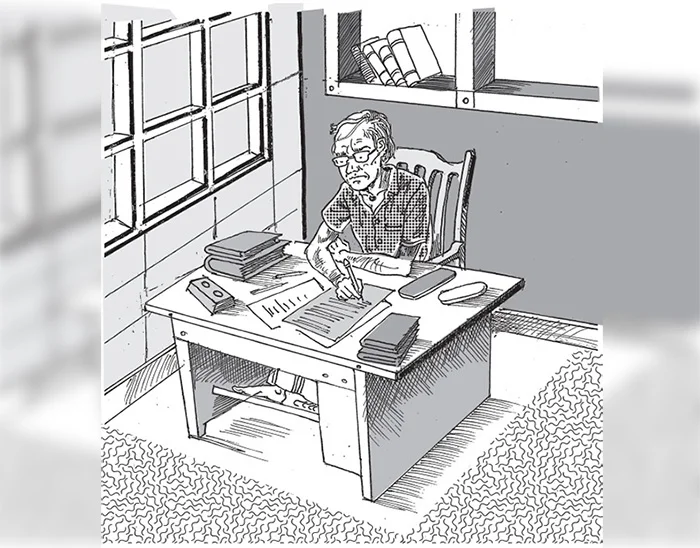
Novelists, poets, short story writers, lyricists, politicians and columnists use words for different purposes. While some of them use words to inform and elevate us, others use them to bolster their ego. If there was no such thing called words, we cannot even imagine what will happen to us. Whether you like it or not everything rests on words. If the Penal Code does not define a crime and prescribe a punishment, judges will not be able to convict criminals. Even the Constitution of our country is a printed document.
A mother’s lullaby contains snatches of sweet and healing words. The effect is immediate. The baby falls asleep within seconds. A lover’s soft and alluring words go right into his or her beloved. An army commander’s words encourage soldiers to go forward without fear. The British wartime Prime Minister Winston Churchill’s words still ring in our ears: “… we shall defend our Island, whatever the cost may be, we shall fight on the beaches, we shall fight on the landing grounds, we shall fight in the fields and in the streets, we shall fight in the hills; we shall never surrender …”
Writers wax eloquent on love. English novelist John Galsworthy wrote: “Love is no hot-house flower, but a wild plant, born of a wet night, born of an hour of sunshine; sprung from wild seed, blown along the road by a wild wind. A wild plant that, when it blooms by chance within the hedge of our gardens, we call a flower; and when it blooms outside we call a weed; but flower or weed, whose scent and colour are always wild.” While living in a world dominated by technology, we often hear a bunch of words that is colourless and often cut to verbal ribbons – “How R U” or “Luv U.” Such words seem to squeeze the life out of language.
Changing medium
Language is a constantly changing medium. New words and forms arrive and old ones die out. Whoever thought that the following Sinhala words would find a place in the Oxford English Dictionary? “Asweddumize, Avurudu, Baila, Kiribath, Kottu Roti, Mallung, Osari, Papare, Walawwa and Watalappan.” With all such borrowed words the English language is expanding and remains beautiful. The language helps us to express subtle ideas clearly and convincingly.
You are judged by the words you use. If you constantly use meaningless little phrases, you will be considered a worthless person. When you read a well-written piece of writing you will note how words jump and laugh on the paper or screen. Some of them wag their tails while others stand back like shy village belles. However, they serve a useful purpose. Words help us to write essays, poems, short stories and novels. If not for the beauty of the language, nobody will read what you write.
If you look at the words meaningfully, you will see some of them tap dancing while others stand to rigid attention. Big or small, all the words you pen form part of the action or part of the narrative. The words you write make your writing readable and exciting. That is why we read our favourite authors again and again.
Editorials
If a marriage is to succeed, partners should respect and love each other. Similarly, if you love words, they will help you to use them intelligently and forcefully. A recent survey in the United States has revealed that only eight per cent of people read the editorial. This is because most editorials are not readable. However, there are some editorials which compel us to read them. Some readers collect such editorials to be read later.
Only a lover of words would notice how some words run smoothly without making a noise. Other words appear to be dancing on the floor. Some words of certain writers are soothing while others set your blood pounding. There is a young monk who is preaching using simple words very effectively. He has a large following of young people addicted to drugs. After listening to his preaching, most of them have given up using illegal drugs. The message is loud and clear. If there is no demand for drugs, nobody will smuggle them into the country.
Some politicians use words so rounded at the edges and softened by wear that they are no longer interesting. The sounds they make are meaningless and listeners get more and more confused. Their expressions are full of expletives the meaning of which is often soiled with careless use of words.
Weather-making
Some words, whether written or spoken, stick like superglue. You will never forget them. William Vergara in his short essay on weather-making says, “Cloud-seeding has touched off one of the most baffling controversies in meteorological history. It has been blamed for or credited with practically all kinds of weather. Some scientists claim seeding can produce floods and hail. Others insist it creates droughts and dissipates clouds. Still others staunchly maintain it has no effect at all. The battle is far from over, but at last one clear conclusion is beginning to emerge: man can change the weather, and he is getting better at it.”
There are words that nurse the ego and heal the heart. The following short paragraph is a good example. S. Radhakrishnan says, “In every religion today we have small minorities who see beyond the horizon of their particular faith, not through religious fellowship is possible, not through the imposition of any one way on the whole but through an all-inclusive recognition that we are all searchers for the truth, pilgrims on the road, that we all aim at the same ethical and spiritual standard.”
There are some words joined together in common phrases. They are so beautiful that they elevate the human race. In the phrase ‘beyond a shadow of doubt’, ‘a shadow’ connotes a dark area covering light. ‘A doubt’ refers to hesitancy in belief. We use such phrases blithely because they are exquisitely beautiful in their structure. The English language is a repository of such miracles of expression that lead to deeper understanding or emphasis.
Social media
Social media use words powerfully. Sometimes they invent new words. Through the social media you can reach millions of viewers without the intervention of the government. Their opinion can stop wars and destroy tyrants. If you use the right words, you can even eliminate poverty to a great extent.
The choice of using powerful words is yours. However, before opening your mouth, tap the computer, unclip a pen, write a lyric or poem, think twice of the effect of your writing. When you talk with a purpose or write with pleasure, you enrich listeners and readers with your marvellous language skills. If you have a command of the language, you will put across your point of view that counts. Always try to find the right words and change the world for a better place for us to live.
By R. S. Karunaratne
karunaratners@gmail.com
Features
Why Sri Lanka Still Has No Doppler Radar – and Who Should Be Held Accountable
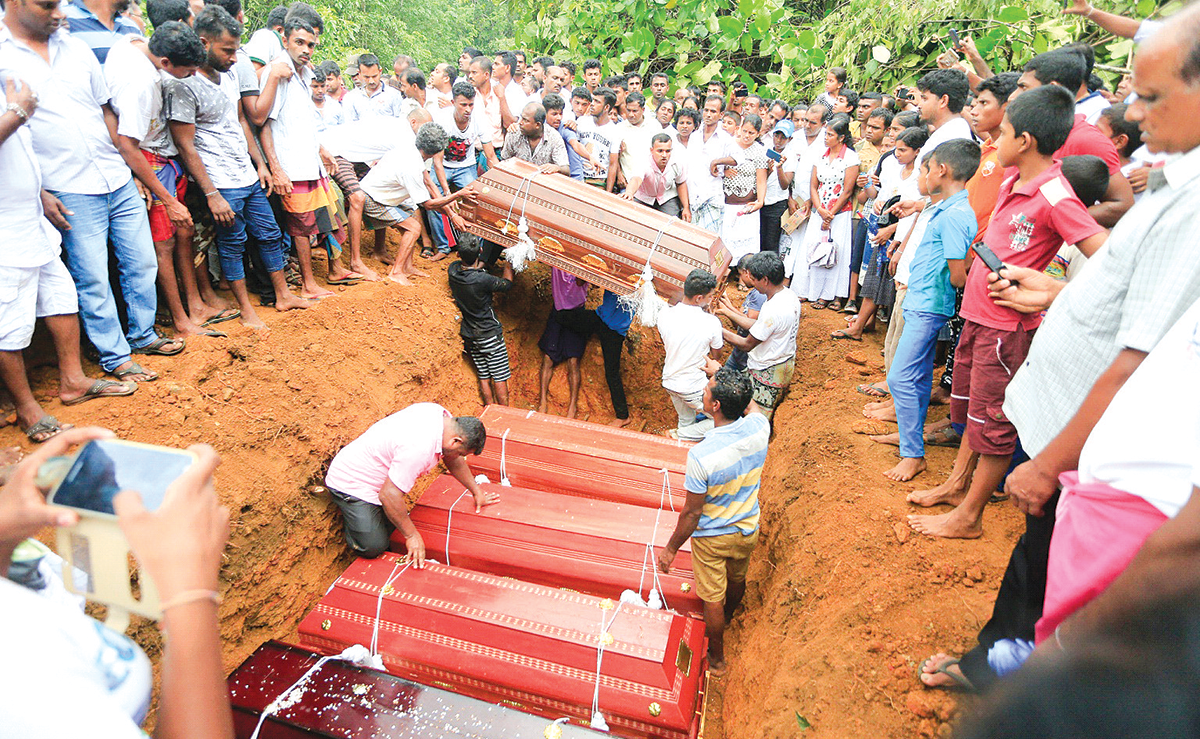
Eighteen Years of Delay:
Cyclone Ditwah has come and gone, leaving a trail of extensive damage to the country’s infrastructure, including buildings, roads, bridges, and 70% of the railway network. Thousands of hectares of farming land have been destroyed. Last but not least, nearly 1,000 people have lost their lives, and more than two million people have been displaced. The visuals uploaded to social media platforms graphically convey the widespread destruction Cyclone Ditwah has caused in our country.
The purpose of my article is to highlight, for the benefit of readers and the general public, how a project to establish a Doppler Weather Radar system, conceived in 2007, remains incomplete after 18 years. Despite multiple governments, shifting national priorities, and repeated natural disasters, the project remains incomplete.
Over the years, the National Audit Office, the Committee on Public Accounts (COPA), and several print and electronic media outlets have highlighted this failure. The last was an excellent five-minute broadcast by Maharaja Television Network on their News First broadcast in October 2024 under a series “What Happened to Sri Lanka”
The Agreement Between the Government of Sri Lanka and the World Meteorological Organisation in 2007.
The first formal attempt to establish a Doppler Radar system dates back to a Trust Fund agreement signed on 24 May 2007 between the Government of Sri Lanka (GoSL) and the World Meteorological Organisation (WMO). This agreement intended to modernize Sri Lanka’s meteorological infrastructure and bring the country on par with global early-warning standards.
The World Meteorological Organisation (WMO) is a specialized agency of the United Nations established on March 23, 1950. There are 193 member countries of the WMO, including Sri Lanka. Its primary role is to promote the establishment of a worldwide meteorological observation system and to serve as the authoritative voice on the state and behaviour of the Earth’s atmosphere, its interaction with the oceans, and the resulting climate and water resources.
According to the 2018 Performance Audit Report compiled by the National Audit Office, the GoSL entered into a trust fund agreement with the WMO to install a Doppler Radar System. The report states that USD 2,884,274 was deposited into the WMO bank account in Geneva, from which the Department of Metrology received USD 95,108 and an additional USD 113,046 in deposit interest. There is no mention as to who actually provided the funds. Based on available information, WMO does not fund projects of this magnitude.
The WMO was responsible for procuring the radar equipment, which it awarded on 18th June 2009 to an American company for USD 1,681,017. According to the audit report, a copy of the purchase contract was not available.
Monitoring the agreement’s implementation was assigned to the Ministry of Disaster Management, a signatory to the trust fund agreement. The audit report details the members of the steering committee appointed by designation to oversee the project. It consisted of personnel from the Ministry of Disaster Management, the Departments of Metrology, National Budget, External Resources and the Disaster Management Centre.
The Audit Report highlights failures in the core responsibilities that can be summarized as follows:
· Procurement irregularities—including flawed tender processes and inadequate technical evaluations.
· Poor site selection
—proposed radar sites did not meet elevation or clearance requirements.
· Civil works delays
—towers were incomplete or structurally unsuitable.
· Equipment left unused
—in some cases for years, exposing sensitive components to deterioration.
· Lack of inter-agency coordination
—between the Meteorology Department, Disaster Management Centre, and line ministries.
Some of the mistakes highlighted are incomprehensible. There is a mention that no soil test was carried out before the commencement of the construction of the tower. This led to construction halting after poor soil conditions were identified, requiring a shift of 10 to 15 meters from the original site. This resulted in further delays and cost overruns.
The equipment supplier had identified that construction work undertaken by a local contractor was not of acceptable quality for housing sensitive electronic equipment. No action had been taken to rectify these deficiencies. The audit report states, “It was observed that the delay in constructing the tower and the lack of proper quality were one of the main reasons for the failure of the project”.
In October 2012, when the supplier commenced installation, the work was soon abandoned after the vehicle carrying the heavy crane required to lift the radar equipment crashed down the mountain. The next attempt was made in October 2013, one year later. Although the equipment was installed, the system could not be operationalised because electronic connectivity was not provided (as stated in the audit report).
In 2015, following a UNOPS (United Nations Office for Project Services) inspection, it was determined that the equipment needed to be returned to the supplier because some sensitive electronic devices had been damaged due to long-term disuse, and a further 1.5 years had elapsed by 2017, when the equipment was finally returned to the supplier. In March 2018, the estimated repair cost was USD 1,095,935, which was deemed excessive, and the project was abandoned.
COPA proceedings
The Committee on Public Accounts (COPA) discussed the radar project on August 10, 2023, and several press reports state that the GOSL incurred a loss of Rs. 78 million due to the project’s failure. This, I believe, is the cost of constructing the Tower. It is mentioned that Rs. 402 million had been spent on the radar system, of which Rs. 323 million was drawn from the trust fund established with WMO. It was also highlighted that approximately Rs. 8 million worth of equipment had been stolen and that the Police and the Bribery and Corruption Commission were investigating the matter.
JICA support and project stagnation
Despite the project’s failure with WMO, the Japan International Cooperation Agency (JICA) entered into an agreement with GOSL on June 30, 2017 to install two Doppler Radar Systems in Puttalam and Pottuvil. JICA has pledged 2.5 billion Japanese yen (LKR 3.4 billion at the time) as a grant. It was envisaged that the project would be completed in 2021.
Once again, the perennial delays that afflict the GOSL and bureaucracy have resulted in the groundbreaking ceremony being held only in December 2024. The delay is attributed to the COVID-19 pandemic and Sri Lanka’s economic crisis.
The seven-year delay between the signing of the agreement and project commencement has led to significant cost increases, forcing JICA to limit the project to installing only one Doppler Radar system in Puttalam.
Impact of the missing radar during Ditwah
As I am not a meteorologist and do not wish to make a judgment on this, I have decided to include the statement issued by JICA after the groundbreaking ceremony on December 24, 2024.
“In partnership with the Department of Meteorology (DoM), JICA is spearheading the establishment of the Doppler Weather Radar Network in the Puttalam district, which can realize accurate weather observation and weather prediction based on the collected data by the radar. This initiative is a significant step in strengthening Sri Lanka’s improving its climate resilience including not only reducing risks of floods, landslides, and drought but also agriculture and fishery“.
Based on online research, a Doppler Weather Radar system is designed to observe weather systems in real time. While the technical details are complex, the system essentially provides localized, uptotheminute information on rainfall patterns, storm movements, and approaching severe weather. Countries worldwide rely on such systems to issue timely alerts for monsoons, tropical depressions, and cyclones. It is reported that India has invested in 30 Doppler radar systems, which have helped minimize the loss of life.
Without radar, Sri Lanka must rely primarily on satellite imagery and foreign meteorological centres, which cannot capture the finescale, rapidly changing weather patterns that often cause localized disasters here.
The general consensus is that, while no single system can prevent natural disasters, an operational Doppler Radar almost certainly would have strengthened Sri Lanka’s preparedness and reduced the extent of damage and loss.
Conclusion
Sri Lanka’s inability to commission a Doppler Radar system, despite nearly two decades of attempts, represents one of the most significant governance failures in the country’s disastermanagement history.
Audit findings, parliamentary oversight proceedings, and donor records all confirm the same troubling truth: Sri Lanka has spent public money, signed international agreements, received foreign assistance, and still has no operational radar. This raises a critical question: should those responsible for this prolonged failure be held legally accountable?
Now may not be the time to determine the extent to which the current government and bureaucrats failed the people. I believe an independent commission comprising foreign experts in disaster management from India and Japan should be appointed, maybe in six months, to identify failures in managing Cyclone Ditwah.
However, those who governed the country from 2007 to 2024 should be held accountable for their failures, and legal action should be pursued against the politicians and bureaucrats responsible for disaster management for their failure to implement the 2007 project with the WMO successfully.
Sri Lanka cannot afford another 18 years of delay. The time for action, transparency, and responsibility has arrived.
(The views and opinions expressed in this article are solely those of the author and do not necessarily reflect the policy or position of any organization or institution with which the author is affiliated).
By Sanjeewa Jayaweera
-

 Features5 days ago
Features5 days agoFinally, Mahinda Yapa sets the record straight
-

 News6 days ago
News6 days agoCyclone Ditwah leaves Sri Lanka’s biodiversity in ruins: Top scientist warns of unseen ecological disaster
-

 Features5 days ago
Features5 days agoHandunnetti and Colonial Shackles of English in Sri Lanka
-

 Business4 days ago
Business4 days agoCabinet approves establishment of two 50 MW wind power stations in Mullikulum, Mannar region
-

 News7 days ago
News7 days agoJetstar to launch Australia’s only low-cost direct flights to Sri Lanka, with fares from just $315^
-
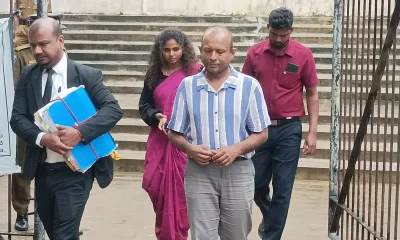
 News4 days ago
News4 days agoGota ordered to give court evidence of life threats
-
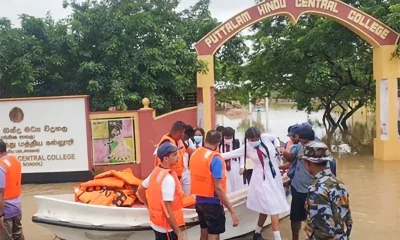
 Features6 days ago
Features6 days agoAn awakening: Revisiting education policy after Cyclone Ditwah
-

 Features4 days ago
Features4 days agoCliff and Hank recreate golden era of ‘The Young Ones’













